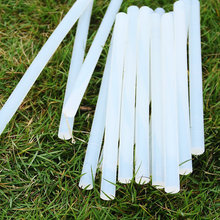您现在的位置是:半岛新闻网 > 产品中心
Hybrid cell turns sunlight and water into hydrogen and electricity
半岛新闻网2024-09-22 07:23:29【产品中心】8人已围观
简介One of the main methods of producing hydrogen for fuel cells is to use artificial photosynthesis to
One of the main methods of producing hydrogen for fuel cells is to use artificial photosynthesis to split water into hydrogen and oxygen, but these devices still suffer from some efficiency issues. Now a new hybrid device may be able to recover some of the energy that would otherwise go to waste, by producing both hydrogen and electricity.
Great strides have been made recently in hydrogen production from artificial photosynthesis, improving the efficiency, lowering the cost, and developing clever systems to put it to work, like rigs that float on the ocean and harvest hydrogen from the water below.
But despite improvements, efficiency remains on ongoing problem. Many artificial photosynthesis devices can only make use of single-digit percentages of the sunlight that hits them, compared to regular photovoltaic systems that often reach 20 percent conversion efficiencies, and have been known to get as high as 45 percent. The researchers on the new study, from Berkeley Lab and the Joint Center for Artificial Photosynthesis (JCAP), blamed the non-silicon components of the water-splitting devices for bringing down the silicon's effectiveness.
"It's like always running a car in first gear," says Gideon Segev, lead author of the study. "This is energy that you could harvest, but because silicon isn't acting at its maximum power point, most of the excited electrons in the silicon have nowhere to go, so they lose their energy before they are utilized to do useful work."
The answer might be surprisingly simple – why not just let those electrons out? To do so, the researchers added a second electrical contact to the back of the silicon component in the device. That splits the current produced by the sunlight's energy, allowing some of the current to split the water into hydrogen and oxygen, and some to be captured as electricity. They dubbed the new device a hybrid photoelectrochemical and voltaic (HPEV) cell.
很赞哦!(69)
相关文章
- Venture Missionaries
- The Mueller report is here and so are the 'Harm to Ongoing Matter' memes
- Naked N. Korean defector attempts robbery, gets arrested
- Verstappen has taken 'another step' since title win
- Which iPad Model Is Right for You?
- Google Maps swaps MLK Day for Confederate holiday in several Southern states
- Google Chrome's redesign has launched in Canary
- Twitter will remove millions of accounts from users' follower numbers
- A Journey Into the Mind of Stephen King
- Elon Musk gave Republicans nearly $90,000 since start of 2017
热门文章
站长推荐

Wordle today: The answer and hints for August 27

市区育才路社区表彰48户文明家庭

How to send spam calls straight to voicemail with Google's phone app

North Korean leader urges support for women in letter to major union of housewives

Best Home Depot Labor Day sale deals

Jongno restaurant catches fire, 32 evacuate

Richard Branson's Virgin hyperloop pod loses record after SpaceX race

Jennifer Holliday cancels Trump inauguration performance, apologizes to LGBT community